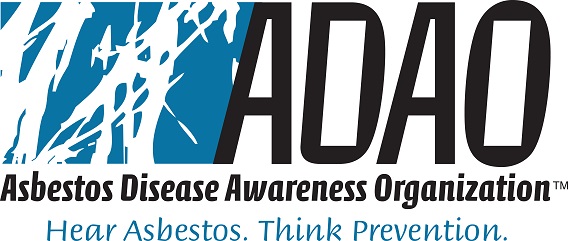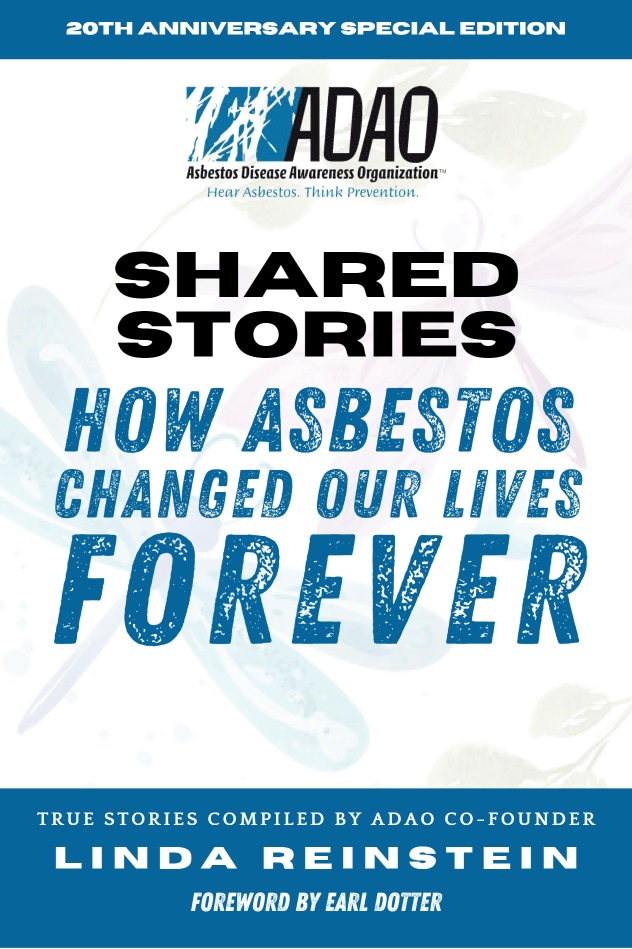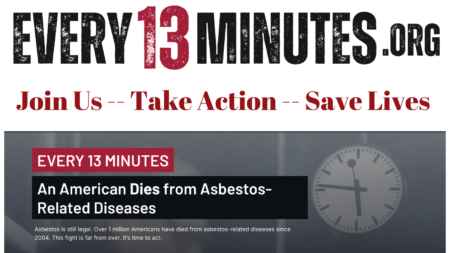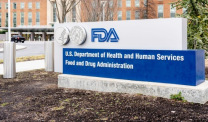ADAO Launches New Website, Adds 100+ New Stories to Book
Asbestos Exposure & BansWritten by Travis Rodgers | Edited by Amy Edel

Shared Stories: How Asbestos Changed Our Lives Forever now contains more than 200 personal stories about how asbestos has affected people’s lives. The Asbestos Disease Awareness Organization has just released a significantly expanded version of its 2013 book and launched a new website to raise awareness about the toxic mineral.
Faces, names and personal details of people who’ve lost their lives or are dealing with an asbestos-related disease fill its page. The first edition contained 70 stories. This new second edition contains more than 100 additional first-hand experiences. It also now features 9 posters showcasing the work of award-winning photojournalist Earl Dotter.
ADAO President and Co-Founder Linda Reinstein says the book’s stories can raise awareness of asbestos’ dangers. She added, these personal stories can help drive policy reform.
Some of the people featured in the book received their mesothelioma diagnosis when they were as young as 14 or 19. Mesothelioma usually affects men over 65 in jobs with high exposure risks. The latency period from exposure to when this rare cancer develops is between 20 to 60 years.
Asbestos exposure isn’t safe at any age or in any amount. Some children are exposed to asbestos in their homes, the environment or when a parent who works with asbestos accidentally brings it home on their clothing or gear.

ADAO’s Share Your Story Campaign
ADAO began a campaign in 2008 called “Share Your Story.” The aim of the campaign was to create a safe place for patients and their loved ones to share personal stories.
It also became a place to draw strength and inspiration from one another. Out of this idea and the community it created, the first edition of ADAO’s book was born in 2013.
Speaking about the new 2024 edition Reinstein tells the Mesothelioma Center at Asbestos.com, “Our new Shared Stories: How Asbestos Changed Our Lives Forever is a testament to every Mesothelioma Warrior who has shared their painful yet courageous story.”
She adds, “We hope the book will not only inspire but mobilize. By sharing more than 200 stories, we aim to amplify our collective voice, raise awareness and drive the policy changes needed to prevent future tragedies.”
Reflecting on the goals for the new edition, Reinstein shares, “These stories are not just memories. They’re the driving force for a world without asbestos.”
New Website Personalizes Key Asbestos Data
ADAO’s new edition of its book puts a human face to the asbestos crisis. And Reinstein says while the organization’s newly launched website focuses on hard data, it also “brings a deeply personal touch to the statistics.”
Fact-based statistics fill the site. But Reinstein says, “It’s where numbers meet names.” The site also shares “real stories from those affected by asbestos.”
The name of the new website, Every13Minutes.org, highlights the statistic that someone dies in the U.S. from an asbestos-related illness every 13 minutes. Reinstein explains the main ADAO website focuses on education, advocacy and community, but Every13Minutes.org focuses on personalizing key data.
Highlights of Data on Every13Minutes.org
- $150,000: The average cost of mesothelioma care for a lifetime
- 39,275 Americans: The number of asbestos-related deaths in the U.S. each year
- 109 Americans: The number of asbestos-related deaths in the U.S. each day
- 255,000 deaths: The number of asbestos-related deaths worldwide each year
Every13Minutes.org has other helpful information, such as a list of the U.S. ports where asbestos is still imported into the country. You can also find important numbers, like the total amount of asbestos brought into the country over the past 20 years.
The organization unveiled the website on September 26th, which is Mesothelioma Awareness Day. This year is also the 20-year anniversary of the ADAO’s founding.
Linda Reinstein and Doug Larkin founded the nonprofit organization, which is now the largest of its kind in the country. The group aims to prevent asbestos exposure and protect the rights of those affected. It does this through education and community initiatives.

U.S. Asbestos Bans and ADAO’s Call to Action
Reinstein says, “Every 13 minutes, an American dies from a preventable asbestos-related disease, and this must end. Together, we can end the suffering and death through the Alan Reinstein Ban Asbestos Now Act.”
On Every13Minutes.org, you can take action. You can find a link on the site where you can then write a message to Congress calling for the passage of the Alan Reinstein Ban Asbestos Now Act.
The act is named after Reinstein’s husband, Alan, who died of mesothelioma in 2006. The bill would “prohibit the manufacture, processing, use, and distribution of commercial asbestos and products containing it, and for other purposes.”
Lawmakers introduced the bill in 2019. They reintroduced it in the Senate in 2023.
ADAO’s new website warns toxic asbestos is still legal in the U.S. and is still in use. While the Biden administration officially finalized a ban on chrysotile asbestos in the U.S. in March 2024, the ban isn’t immediate and has limits.
Companies are allowed up to 12 years to gradually phase out the material used in manufacturing. Also, the ban doesn’t apply to all types of asbestos.
More than 60 countries, including Canada and the United Kingdom, have banned asbestos. The U.S. has progressively banned uses of asbestos since the 1970s.
The U.S. Environmental Protection Agency’s Clean Air Act of 1973. It banned most spray-applied asbestos products for insulation and fireproofing.
In 1989, the agency introduced the Asbestos Ban and Phase Out Rule. It would have prohibited all manufacturing, importing, processing, and selling of asbestos products. However, asbestos industry supporters challenged and overturned the ban in 1991.
Images courtesy of ADAO.







